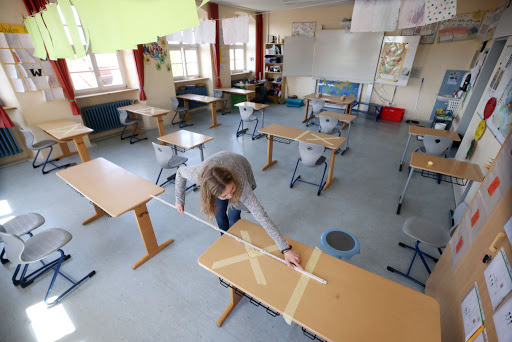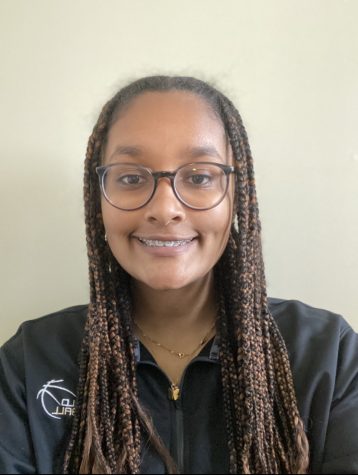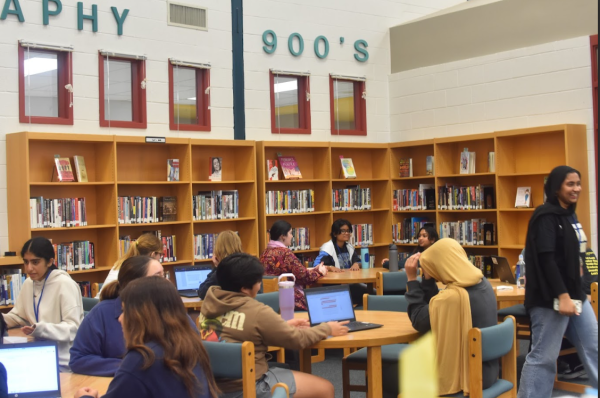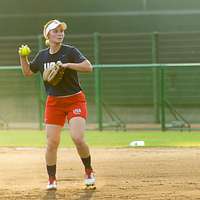A NEW NORMAL: POSSIBLE OPTIONS FOR FALL RETURN

Photo courtesy of Alex Grimm
Schools in Germany setting up to return to school in the coming weeks, now with socially distanced tables among measures to prevent the spread of COVID.
Imagine students returning to physical school in the fall, except only twice a week,with the other days accounted for through distance learning. On the days that the building is occupied, students go to classes of 10-16 people, with each desk six feet apart. On the bus, each child sits alone on a bench. During lunch, students must eat in their isolated classroom tables. Everyone is wearing a mask at all times.
The novel coronavirus pandemic has left the country ,and world, with many questions about an uncertain future, including plans for reopening schools come next fall, a step seen as necessary for restoring normalcy. However, considering no vaccine has been approved, going back to school without adjustments is likely not feasible. This is especially true in Fairfax County, which represents nearly a quarter of Virginia’s COVID cases.
On May 18th, Virginia Governor Ralph Northam announced the creation of the Education Work Group to help navigate the reopening of schools. This group, composed of representatives from public and private, K-12, and higher education Virginia schools, will release recommendations on issues that schools will have to address before they can reopen.
A survey conducted by the Fairfax County Council PTA (FCCPTA), completed by 82,000 people, showed clear signs that residents want to move forward safely. 82% of those surveyed agreed that class instruction should resume only if deemed safe by public health officials. 70% believed that FCPS should consider implementing alternative approaches, such as lower class size or staggered starting times.
Scott Brabrand, FCPS Superintendent, echoed this sentiment, stating, “We need to make data based…condition based decisions [regarding reopening].”
So what options has FCPS outlined?
SCENARIO 1: START WITH DISTANCE LEARNING
If conditions remain subpar and physical learning is not deemed safe enough, FCPS would start school online.
This option would come with a host of its own issues.
FCPS distance learning, since schools closed in mid April, has come under much scrutiny and criticism due to its shortcomings. Distance learning was implemented a month after schools closed, but even then, several weeks were lost or cut short due to technological failures with FCPS’ program of choice, Blackboard Collaborate Ultra. Amid the issues, the school system’s Assistant Superintendent of IT, Maribeth Luftglas, stepped down, and the county stepped away from its Blackboard partnership, opening up other avenues for teachers to meet with their classes. As a result, Brabrand announced that an uninvolved law firm specializing in IT and Cybersecurity, Hunton Andrews Kurth LLP, would perform an audit in an attempt to diagnose and fix problems with distance learning.
Another issue is the need for more laptops. All FCPS high schoolers were issued a laptop at the beginning of the 2019 school year, but the same was not done for middle and elementary school students. The county has estimated that it would need at least 18,000 additional laptops, along with the existing available ones, as well as mifi devices to cover students that aren’t currently connected 1:1.
Finally, remote learning poses a concern for parents with elementary aged kids; by the fall, many parents’ jobs will likely have them reporting back to work sites, so there would be a need for childcare if their kids are not going into school every day. The cost of childcare would put an extra burden on families, especially those who have already suffered financial losses due to the shutdown.
If school in the fall resumes through distance learning, the county plans to revise the current schedules, increase the amount of resources available to students, and expand community partnerships.

SCENARIO 2: RETURN WITH SOCIAL DISTANCING
This scenario is more in line with recommendations of various health organizations, like the CDC. This could include alternating schedules, spread out desks, one way hallways, and more.
With this approach and the limited capacity involved, FCPS would have to consider giving priority for in school learning to students based on need, rather than desire, to attend class in person. A large number of extra busses would also have to be purchased.
Additionally, the county would have to navigate this approach’s impact on teachers. Accommodating distance learning is already difficult, but blending it with in person instruction would create a whole new wave of challenges, including managing students both online and in person.
SCENARIO 3: RETURN WITHOUT SOCIAL DISTANCING
With this option, schools would resume near-normal operations. But they would also have to plan to revert to distance learning for short or prolonged periods of time, if circumstances change.
According to Brabrand, “If we reopen and find a positive case for a kid or a child, that school would close for, I believe, a national recommendation of 2-5 days…It would close for deep cleaning for 2-5 days, and then reopen.”
This scenario poses a large concern for communities within the county that have a high rate of infection, as their schools would be closed for more days, hindering their learning.
Additionally, with this option, the county plans to offer a complete online campus, with more course sections, for students (and staff) who are at a higher risk and would feel more comfortable not returning to schools.
Brabrand expressed in a May school board meeting that FCPS aims to release more detailed information concerning possible scenarios by June 15th, when they receive more information from the state COVID-19 Education Task Force. No matter the approach though, school in the fall will look significantly different to school as it has operated for decades.
Many health officials have pointed to widespread testing as imperative to school reopening, as testing would make it much easier to isolate positive cases. As it is hard to gauge the magnitude of testing the county will conduct between now and August, much uncertainty still surrounds the fate of FCPS schools in the fall.









